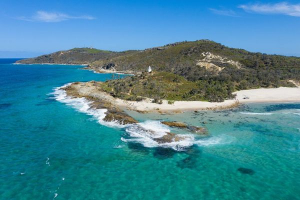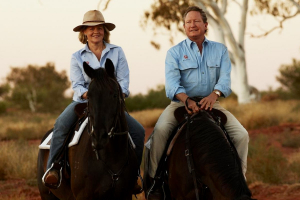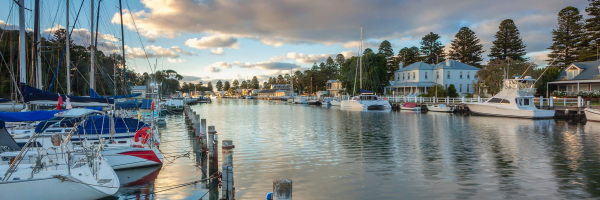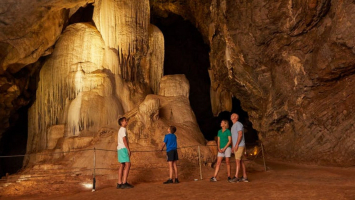Top 10 Most Colorful Species of Parrots Found in Australia
Australia is a bird lovers’ paradise. This is home to a large number of wild birds including a family of flightless birds, ducks, geese, and old-world parrots. ... read more...There are 44 species of parrot found in Australia including 14 species of cockatoos, parakeet, lorikeet, rosella, galah, and corella. Different sized and colored parrots come together to form an ecosystem that is unique and cannot be found anyplace else. Here is a list of the most colorful species of parrots found in Australia, let's find out!
-
Australia is home to the Rainbow Lorikeet (Trichoglossus moluccanus), a species of parrot. The eastern seaboard, from northern Queensland to South Australia, is characterized by its prevalence. Its habitat is rainforest, coastal bush, and woodland areas. Previously classified as subspecies of the rainbow lorikeet, six taxa are now considered distinct species.
The rainbow lorikeet is a medium-sized parrot that weighs between 75 and 157 g and measures between 25 and 30 cm long, including the tail. As with all subspecies, the nominate race has extremely vivid and colorful plumage. The upper body, including the wings, back, and tail, are all green, with the head being a deep blue color with a greenish-yellow nuchal collar. It has an orange-yellow chest. The thighs and rump are green, while the belly has a deep blue color. A yellow wing bar and the red underwing coverts stand out sharply in flight. The visual differences between the sexes are minimal. A black beak is present in juveniles; it gradually turns orange in adults.

Wikimedia Commons 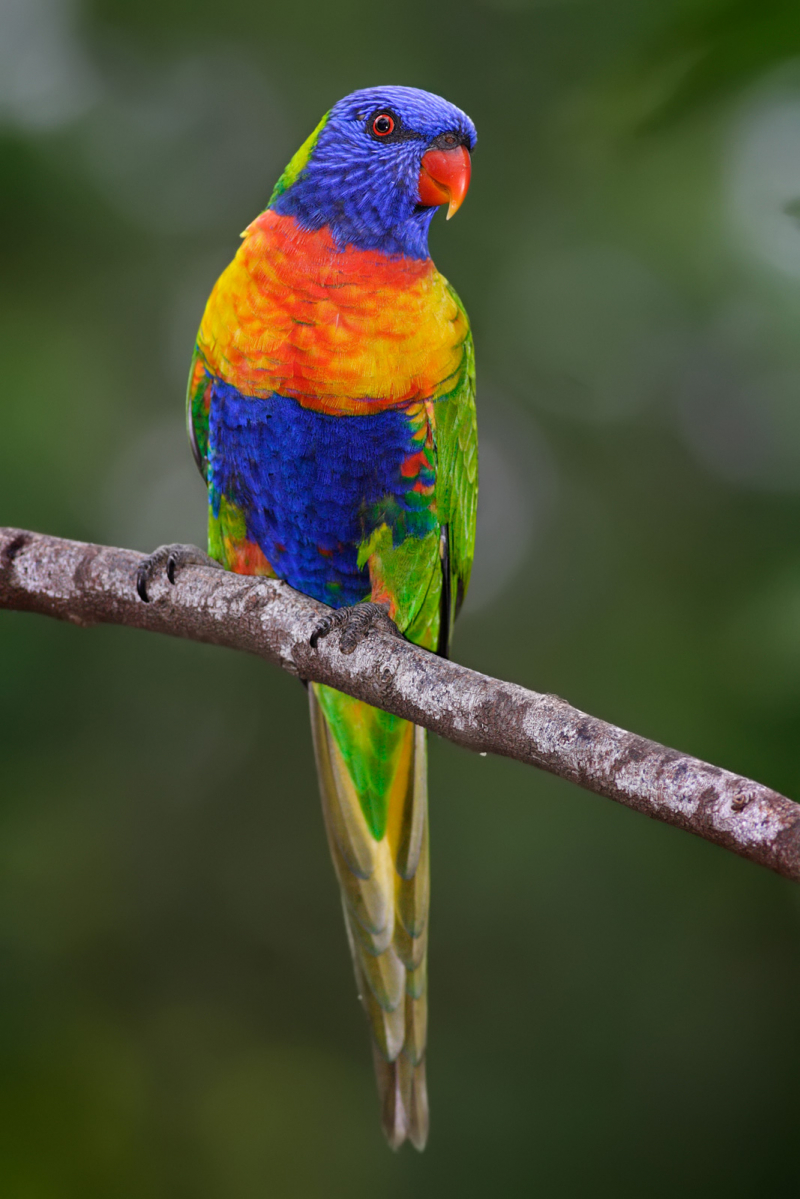
Wikipedia -
The Mulga Parrot (Psephotellus varius) is endemic to arid scrublands and lightly timbered grasslands in the interior of southern Australia. The Mulga Parrot is a medium-sized parrot with a long tail and reaches approximately 27–32 cm in length with a 30-42 cm wingspan. It weighs 50–60 g. The species exhibits sexual dimorphism, with distinct differences between the sexes' plumage. The alternative common name many-colored parrot is derived from the fact that the male mulga parrot is colorful. Overall, it has a vivid green color, although there is a bluish tint on the neck and above the eye, and the breast is whiter. It has a pale green rump. There is a crimson patch on the back of the skull, and the forehead is yellow.
With the exception of the yellow median wing coverts and the blue outer webs of the primaries, the lower belly and thighs are marked with orange-red, and the wings are greenish. The long tail has a variety of colors: the two long core feathers are a dark blue with green undertones, the outside feathers are a blue that fades to white, and the higher tail coverts have some red. Its iris is brown, and its bill is blue-grey with black edges. The overall appearance of the female is duller; she has an olive-brown head and chest, a duller yellow forehead, a duller red patch on the back of the head, a pale green belly, and a more brown-grey beak. It occasionally also sports a crimson shoulder.
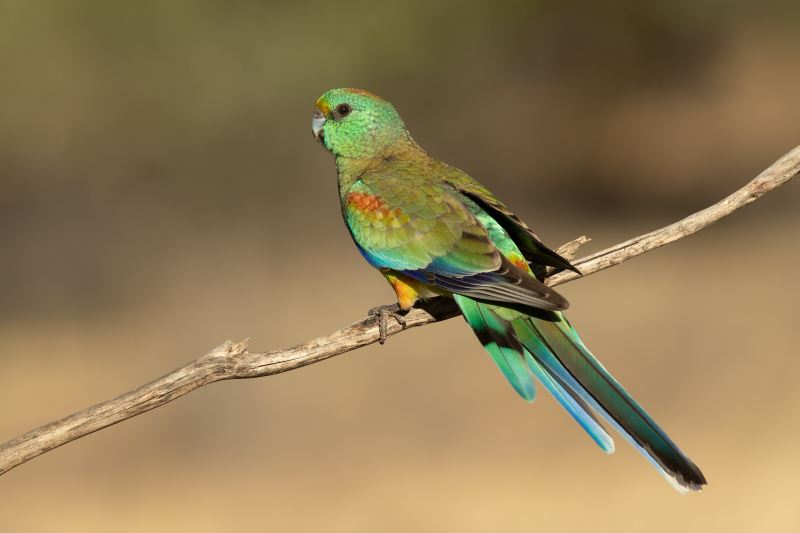
Wikipedia 
eBird -
The Eastern Rosella (Platycercus eximius) is a rosella native to southeastern Australia and Tasmania. The species is found in lightly wooded country, open forests, woodlands, gardens, bushlands, and parks. Although summer might be used if necessary, eastern rosellas typically breed in the spring. The range is 2 to 9 eggs. In the wild, their breeding depression is 30 meters (98 feet) up a tree, 1 meter (3 feet) deep. The primary indication that eastern rosellas would be reproducing is that they feed one another.
Eastern rosellas measure 30 centimeters in length. It has white cheeks and a redhead. The irises are brown, and the beak is white. The lower breast is yellow, fading to a faint green color over the belly, while the upper breast is red. The scalloped look of the black back and shoulder feathers, which vary slightly between subspecies and sexes, is caused by their yellowish or greenish borders. The tail is dark green, while the wings and lateral tail feathers are bluish. They have gray legs. The female is identical to the male but has duller coloring and an underwing stripe that the adult male lacks. Young birds have an underwing stripe and are duller than females.
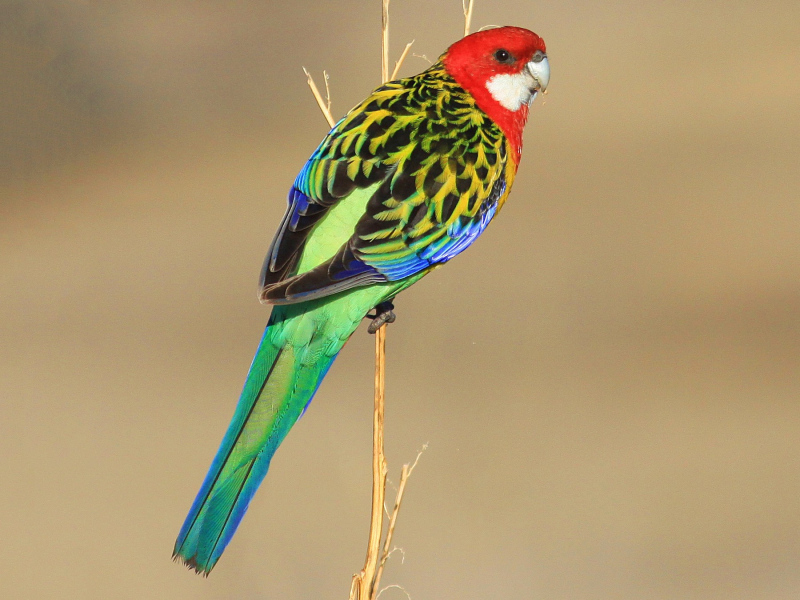
eBird 
eBird -
The Red-Winged Parrot (Aprosmictus erythropterus) is a parrot native to Australia and New Guinea. It is found in grasslands, savannah, farmland, and woodland. Although the birds normally reproduce in the spring and summer, this might vary depending on where they are. Breeding birds typically use a hollow area 11 meters up in trees as their nest. Typically, three to six white eggs, each measuring 31 mm in length, are laid per season. While the male looks for food, the female lays her eggs. About five weeks pass while the chicks remain with their parents.
The average length of a red-winged parrot is between 12 and 13 inches or 30 to 33 cm. Brilliant red wings and a bright green body are shared by both sexes. The male birds have grey feet, an orange bill, a lower blue back and rump with a yellow tip, and a black neck. The wings of female birds are trimmed in red and pink, while their bodies are a yellowish-green color. Dark irises and pale blue color on the lower back help to identify females. Juveniles are primarily colored like females, with the exception of their orange-yellow beaks and light brown eyes. Females reach adulthood at around the age of one and a half years, while males do so around the age of two.

eBird 
eBird -
The Cockatiel (Nymphicus hollandicus), also known as weiro bird, or quarrion, is a member of its own branch of the cockatoo family endemic to Australia. The emotional state of the cockatiel is expressed by its characteristic crest. When the cockatiel is calm or peaceful, the crest is gently oblique, strikingly vertical when startled or aroused, and flattened towards the head when furious or defensive. When the cockatiel is attempting to appear seductive or flirty, the crest is held flat and occasionally extends outward from the back. The crest of a fatigued cockatiel is seen halfway up, with the tip of the crest typically curving upward. The cockatiel has lengthy tail feathers that makeup around half of its overall length, in contrast to most cockatoos.
The "regular grey" or "wild-type" cockatiel has mainly grey plumage with noticeable white flashes on each wing's outer edge. The female's face is mostly grey or light grey, whilst the male's face is mostly yellow or white. Both sexes have a circular orange region on each of their ears, which is frequently referred to as "cheddar cheeks". Adult males typically have a vivid orange coloration, but females frequently have a subdued orange coloration.

World Birds 
eBird -
The Galah (Eolophus roseicapilla), also known as the pink and grey cockatoo or rose-breasted cockatoo, is the only species within the genus Eolophus of the cockatoo family. It is one of the cockatoos that are most widely distributed throughout Australia. Galahs make their nests in tree cavities. The white eggs often come in clutches of two to five. The male and female share the incubation of the eggs, which lasts for around 25 days. About 49 days after hatching, the chicks depart the nest.
The galah has a length of around 35 cm and weighs 270–350 g. Its features include a pink face, pink breast, a light pink movable crest, a bar of pale silver to grey back, and a pale grey rump. The naked skin of the eye ring is carunculated, and its beak is bone-colored. Its legs are gray. Although the sexes appear to be similar, adult birds have different eye colors. The males have very dark brown (nearly black) eyes, while the females have mid-brown or red eyes. The colors of adults are more vivid than those of juveniles. Juveniles have brown irises with pale, non-carunculated eye rings, a greyish breast, head, and crest.

eBird 
eBird -
An Australian endemic, the Superb Parrot is a parrot native to south-eastern Australia. It is a dimorphic species and one of three species in the genus Polytelis. There are estimated to be at least 10,000 individuals in the wild. It builds its nest in a hole in a tree or a hollow branch. Males frequently feed in small groups by themselves during the breeding season. Females are in the area right now because pairs can nest in loose colonial systems of up to 6 pairs. The primary ingredients of the diet are eucalyptus flowers, fruits, nectar, and pollen. It eats the Yellow Box's seeds and green heads (Eucalyptus melliodora).
The splendid parrot is a medium-sized bird that is 40 cm in length, is bright green, has long tail feathers, a yellow-green neck, and orange-yellow eyes. The adult male has a brilliant yellow face and throat, as well as a red band on its upper breast. The mature female has an orange set of legs, a pale blue-green face, a greyish-green neck, and a variably tinted russet-pink for the throat. Juveniles resemble females overall, although they have brown eyes. At around one year of age, the male has developed adult-colored plumage.

Wiktionary 
Wikipedia -
Alisterus scapularis, sometimes known as the Australian King Parrot, is a species of parrot native to eastern Australia. Its range extends from Cooktown in Queensland to Port Campbell in Victoria. found in humid upland areas of the eastern part of the continent that are densely forested, especially eucalyptus-wooded places that are in or right next to subtropical and temperate rainforests. They eat fruits and seeds that they collect from the ground or from trees.
With a long, broad tail, adults of both sexes measure around 43 cm in length. The mature male has a blue band on the back of the neck separating the red above from the green below. The wings are green with each having a pale green shoulder band. The tail is also green, and the rump is blue. The male has a black lower jaw with an orange base, a reddish-orange upper mandible with a black tip, and yellow irises. The female's plumage differs greatly from the male's with a green head and breast, a grey beak, and a faint or nonexistent pale shoulder band. Juveniles of both sexes have brown irises and a yellowish beak and otherwise resemble the female.
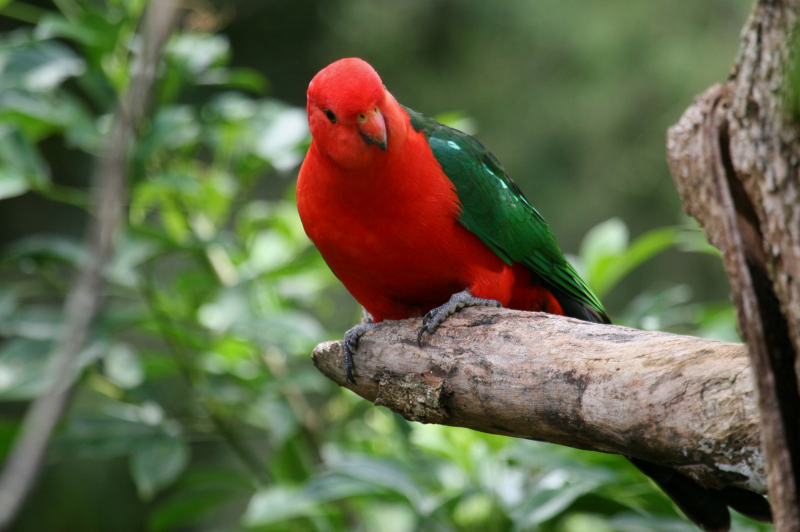
Birds in Backyards 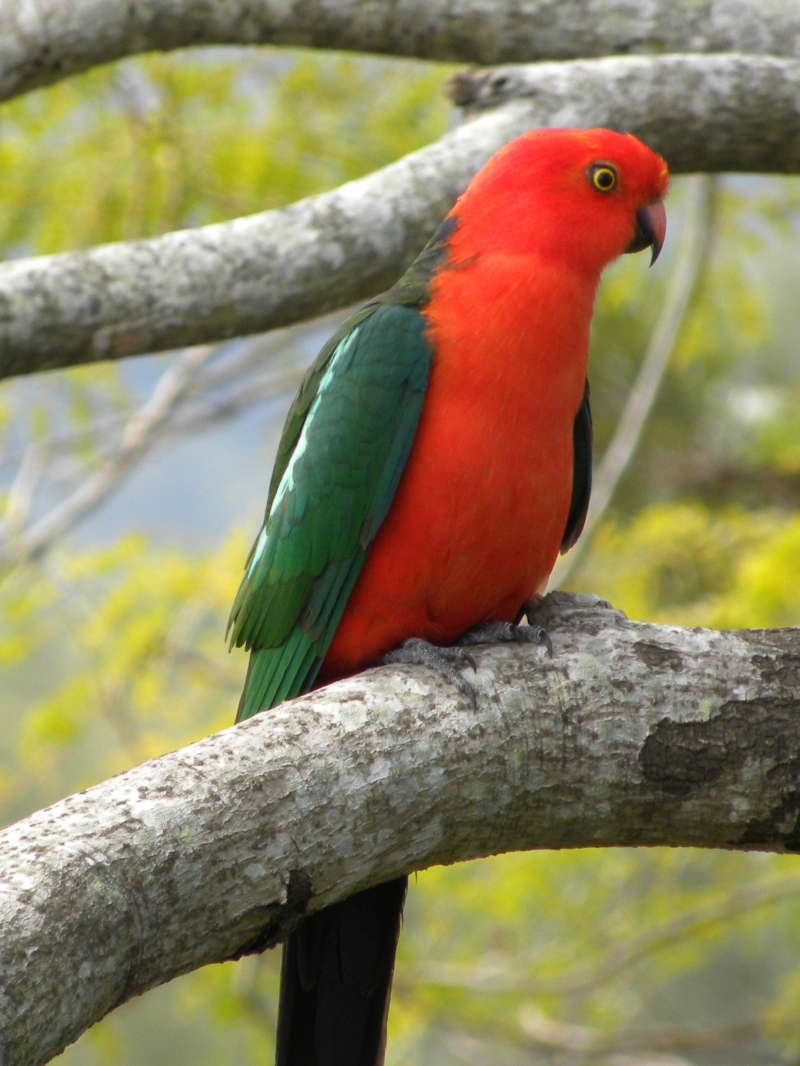
Wikimedia Commons -
Australia is home to the colorful Princess Parrot (Polytelis alexandrae), a member of the family of parrots. It was given that name in honor of Princess Alexandra of Denmark, who wed Prince Edward VII of Wales in 1863 and went on to become the monarch of the United Kingdom. Other names for the species include spinifex parrot, princess of Wales parakeet, rose-throated parakeet, and queen Alexandra parrot (or parakeet).
A medium-sized parrot, the princess parrot measures 34 to 46 cm in length and weighs between 110 and 120 g. With a pink throat, bluish crest, and vivid green shoulders, the plumage is primarily green. The tail is long and slender, and the rump is blue. In comparison to females, males have larger tail feathers and more vibrant colors. Additionally, the beak of the male is coral-red, while that of the female is duller and has a greyish crown. The iris of the male is orange, whereas that of the female is somewhat browner. Additionally, on each side of the 3rd primary (flight) feather, the male of the species has a longer, projecting extension.

Wikipedia 
Wikipedia -
A little, long-tailed, seed-eating parrot often known as the budgie or, in American English, the parakeet, the Budgerigar (Melopsittacus undulatus) is also known as the common parakeet or shell parakeet. The sole species in the genus Melopsittacus are budgies. The species' natural colors are green and yellow, and its wings, back, and neck are all covered in black, scalloped markings. In captivity, budgies are bred to have blue, white, yellow, grey, and even little crests as colors. Adults can be distinguished from juveniles and chicks by their behavior and cere color, while juveniles and juveniles are monomorphic.
The species is the sole member of the single genus in the tribe of Melopsittacini, Melopsittacus. Budgerigars, who were first mentioned in 1805, are well-known pets all over the world because of their small size, low price, and capacity to mimic human speech. After domesticated dogs and cats, they are perhaps the third most common pet worldwide. Since the 19th century, budgies, or migratory flock parakeets, have been reared in captivity. Budgerigars mate sporadically and in pairs both in captivity and in the wild. In Australia's drier regions, where they have existed in the wild for more than five million years, they can be found. Their capacity to reproduce while on the road and their nomadic lifestyle are factors in their success.
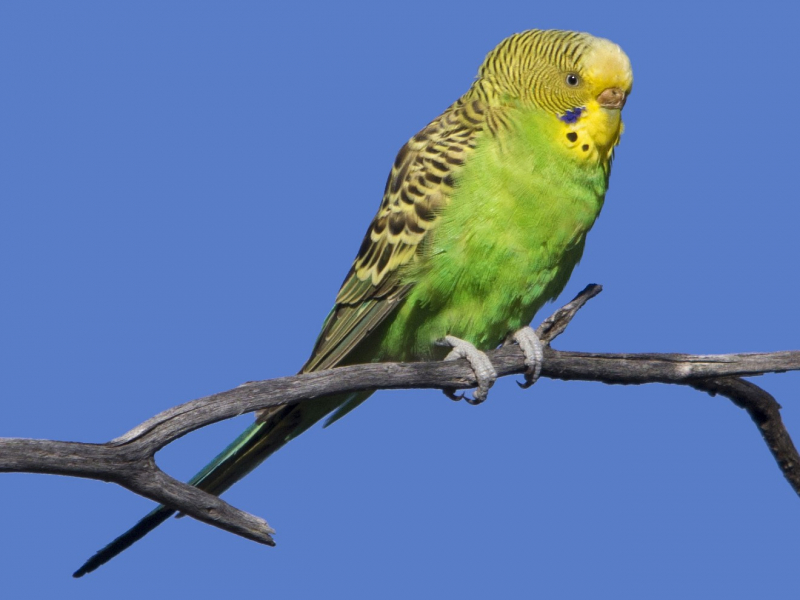
eBird 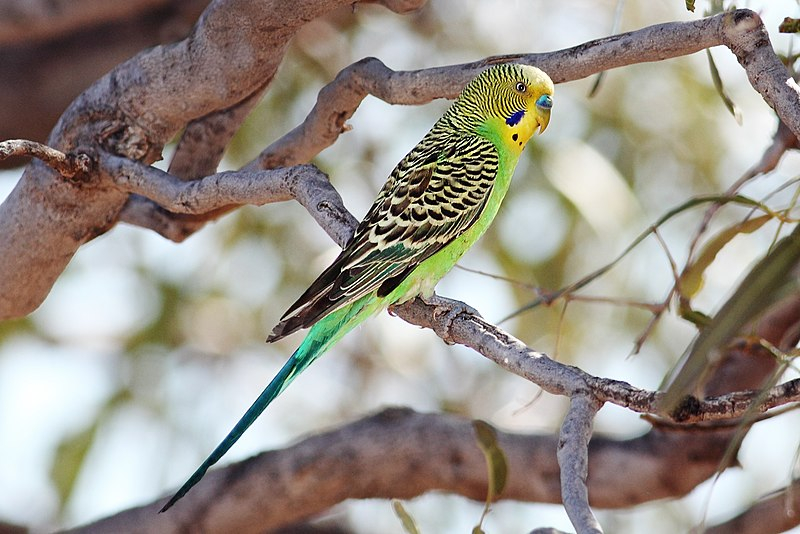
Wikipedia






















